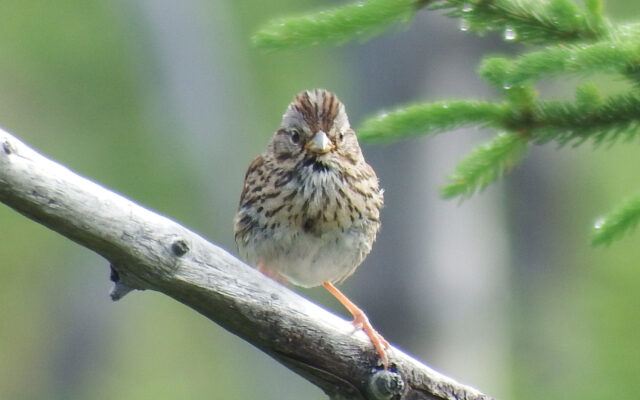
I have been birding for decades but had never seen a hawk do this
By Bob Duchesne
Few people venture into the deep woods to go birding. Pity. Maine is the most forested state in the nation. Millions of birds melt into the Maine woods every year to nest, where they are seldom disturbed by people, save for a few loggers. Even if that was the only adventure, it would be worth the trip. But it’s not the only adventure.
This is the last summer of a five-year survey to inventory Maine birds. The Maine Department of Inland Fisheries and Wildlife conducts the bird census every 20 to 30 years. By comparing the results, wildlife biologists can track environmental trends and habitat changes.
I’m thrilled to survey the wildest parts of the state, where stuff like this happens. Picture it. After a long day of walking the logging roads west of Moosehead Lake, I was just finishing a good meal and a second glass of wine when a Canada lynx walked right up to the campsite. I don’t know what it is about them, but lynx are certainly less concerned about people than bobcats are.
It was just before sunrise when I stepped outside the next morning, directly into the gaze of a suspicious moose. I froze. It froze. We just stared at each other, until the cow finally decided it didn’t like my company. Who could blame it?
A couple hours later, I saw something I’ve never seen in my life. I didn’t even know this happens. I was on a logging road in an area that had been harvested a few years earlier. Suddenly, I heard the unfamiliar screech of a familiar bird. Across the field, a female northern harrier was beating wings toward me. But not at me.
She passed directly overhead, and greeted her mate coming loudly from the other end of the clearcut. As they passed over me together, I watched in awe as he dropped a field mouse above her head. She caught the morsel in midair and returned to her side of the field.
I’ve seen hundreds of northern harriers from here to Florida. I’ve never heard one make a sound, until now. I did not know these hawks do a midair food exchange. It turns out that this is standard practice among northern harriers.
Because they are ground nesters, they take great pains to avoid the prying eyes of terrestrial predators. As happens with a few other species, her mate bears responsibility for feeding her, while she is incubating. But to avoid disclosing the location of the nest, they rendezvous away from the nest.
Most of the birding in Maine happens where most of the birders are: in populated areas, around parks and preserves, upta camp. Many of these neighborhood birds are accustomed to people and don’t get terribly alarmed by their presence. Annoyed maybe but not alarmed. In truly wild places, it’s fascinating to watch how different species react to people.
Some birds like to nest in roadside shrubbery. As you walk by, you can tell what stage of baby-making they are in. Common yellowthroats, song sparrows and white-throated sparrows share a similar pattern. When the pairs are courting, they don’t care much about people. When she’s on the nest, the male alone may perch up and sound a cautious note of alarm.
When the eggs have hatched, his response will be more animated, while she remains hidden. When the chicks have fledged, and they’re hiding in the bushes, both parents go hyperbolic as you walk by.
The same thing happens with more unusual species. I was walking an ATV trail north of Long Pond when I noticed a sparrow hop from beneath a bush to a nearby tree — a Lincoln’s sparrow. I was still 100 yards away when it started scolding. As I got closer, it got louder. When I reached the spot, the bird threw itself into the road in an apparent distraction display. I hurried on. By the time I was 150 yards past, it was still hurling insults my way.
Black-throated blue warblers are usually shy. They can be difficult to draw in for a look. However, they nest in shrubbery, usually about 3 to 5 feet off the ground. The moment the babies leave the nest, both parents are hypervigilant.
I saw a little puffball of feathers flit in a bush. As I drew closer, its mother flew straight at my eyes! I quickly retreated. These are the kind of experiences one can have, when people bird where there are no people.